Two hurt as train derailed in flood landslide near Watford Junction
- Published
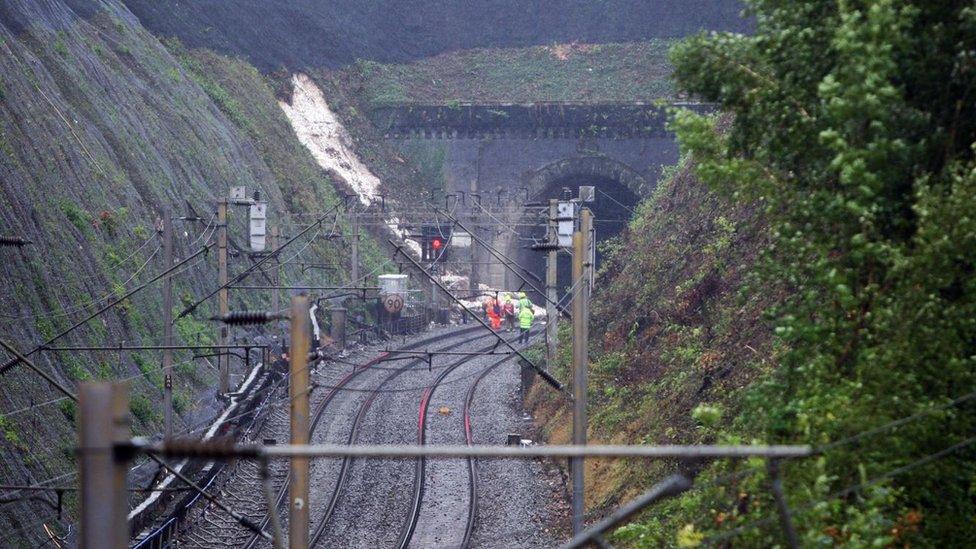
The landslide by the tunnel caused the train to derail
Two people were hurt when a train derailed near Watford Junction after torrential rain caused a landslide at the mouth of a tunnel.
The 06:19 BST service from Milton Keynes to Euston left the track at about 07:00, Network Rail said.
Part of the train derailed and was clipped by another. The fire service helped evacuate almost 400 passengers.
London Midland has warned that delays will run into the weekend with many services cancelled out of Euston.
One traveller was treated for a neck injury and the other for chest pain.
A Virgin train was sent to the scene to take stranded passengers on to King's Langley, Hemel Hempstead and Milton Keynes.
London Midland and Virgin services remain "severely disrupted" from the Midlands, the north-west and Scotland.
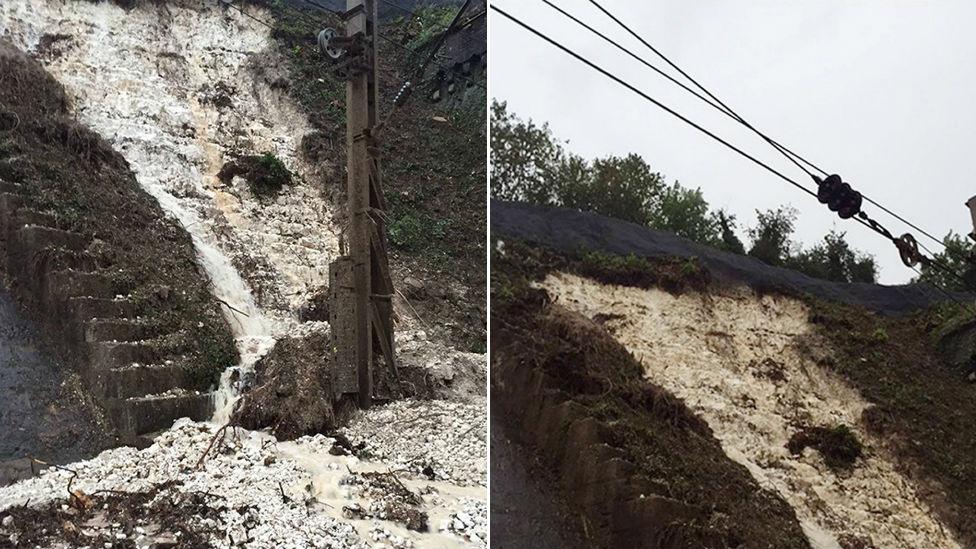
The landslip happened at the mouth of the tunnel
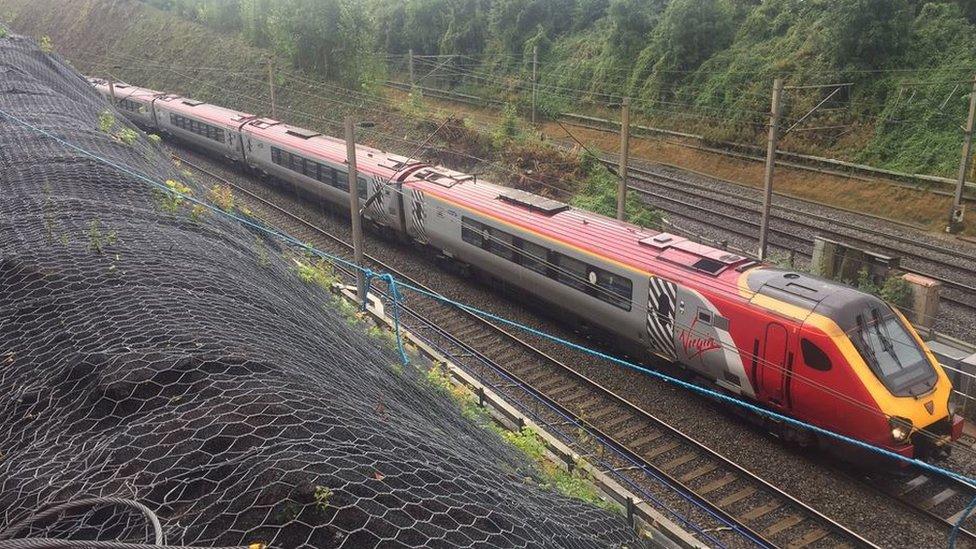
A Virgin train took stranded passengers to King's Langley
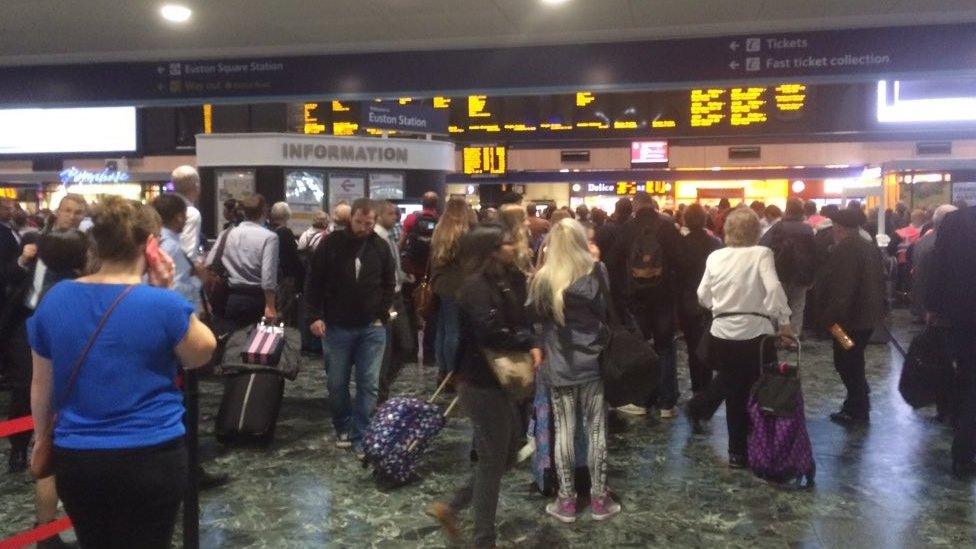
Early morning passengers crowded the concourse at London's Euston station as trains ground to a halt
'Landslide to blame'
The accident happened in Hunton Bridge tunnel near Watford Junction station.
Flash floods bring disruption to parts of England
Live updates on flooding and storms across the country
British Transport Police were called to the scene along with the East of England Ambulance Service and Hertfordshire Fire and Rescue Service.
Hertfordshire Fire Service said officers who helped evacuate passengers "counted 384 people" on board the two trains.

Emergency services and engineers remain at the scene

Passengers were told about delays on monitors and Tannoy systems across the network

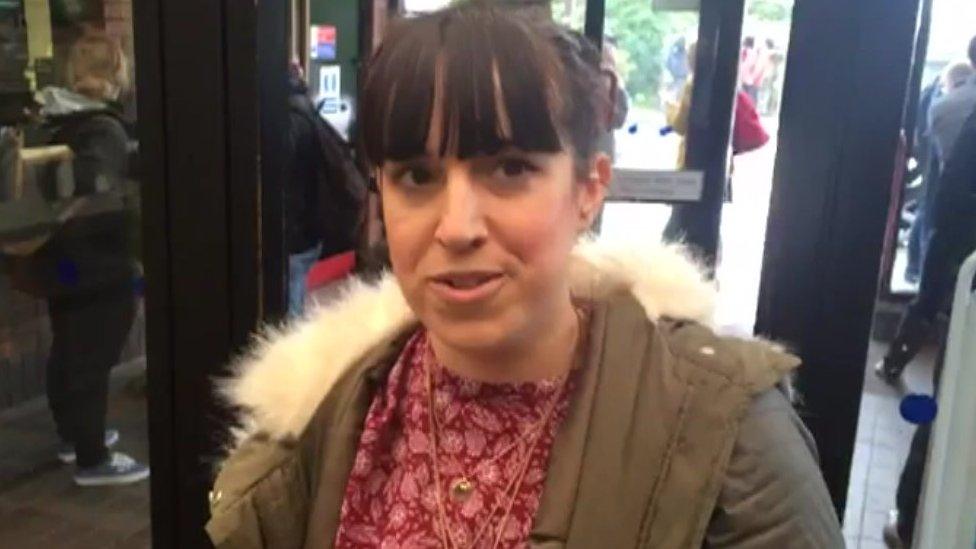
Jessica Long, a passenger on the derailed train, said: "The train hit something, it went up into the air a little bit and went off the track."
Passengers' stories
Jessica Long, a passenger on the derailed train, said: "The train hit something, it went up into the air a little bit and went off the track. You could hear it going over the gravel.
"When we stopped, we checked everyone on the train was OK, and then the next thing we knew we got hit by another train so we were absolutely panicking.
"The way the train driver reacted, like, that guy deserves an absolute medal because he did so well. He came straight on the Tannoy to ask if we were all ok and tell us what was happening.
"Hats off to that guy, and he was injured as well."
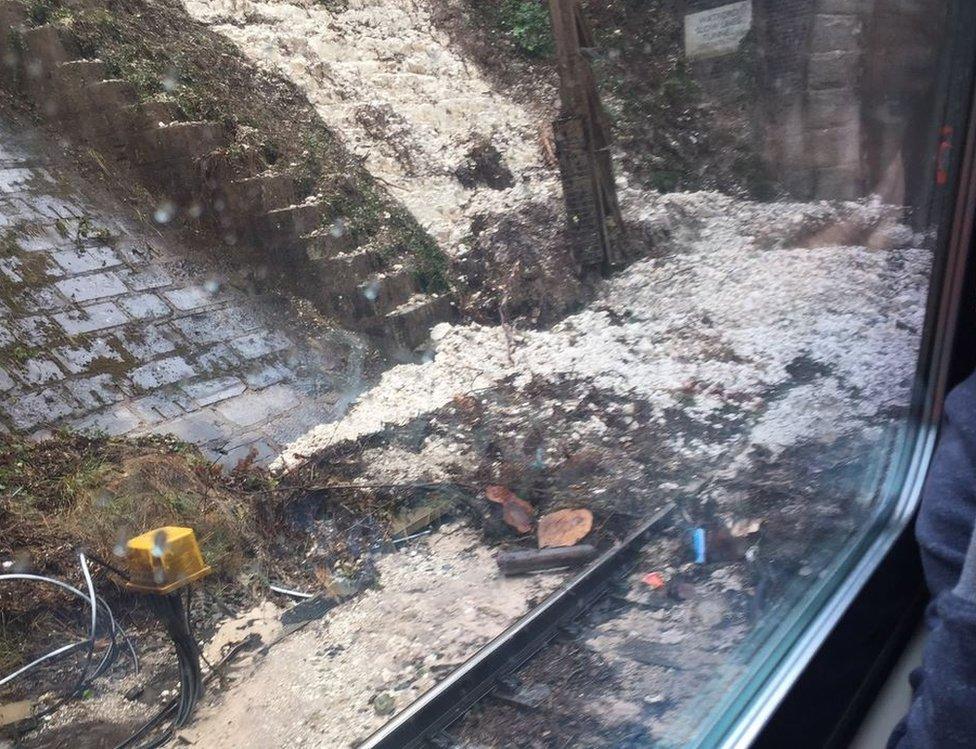
Ian Saunders took this photo on board the Virgin train as it took stranded passengers away from the tunnel. London Midland staff, fire crews and police had been "great", he said.
Passenger Clive Todd was commuting into London from Hemel Hempstead on the same train when he heard an "almighty noise".
The train "shuddered" and then came to a "quick halt" as it derailed, he said.
Mr Todd said he was a few carriages away from where the train came off the tracks, but he could see part of it "at a right angle".
The experience was "scary stuff", he said.
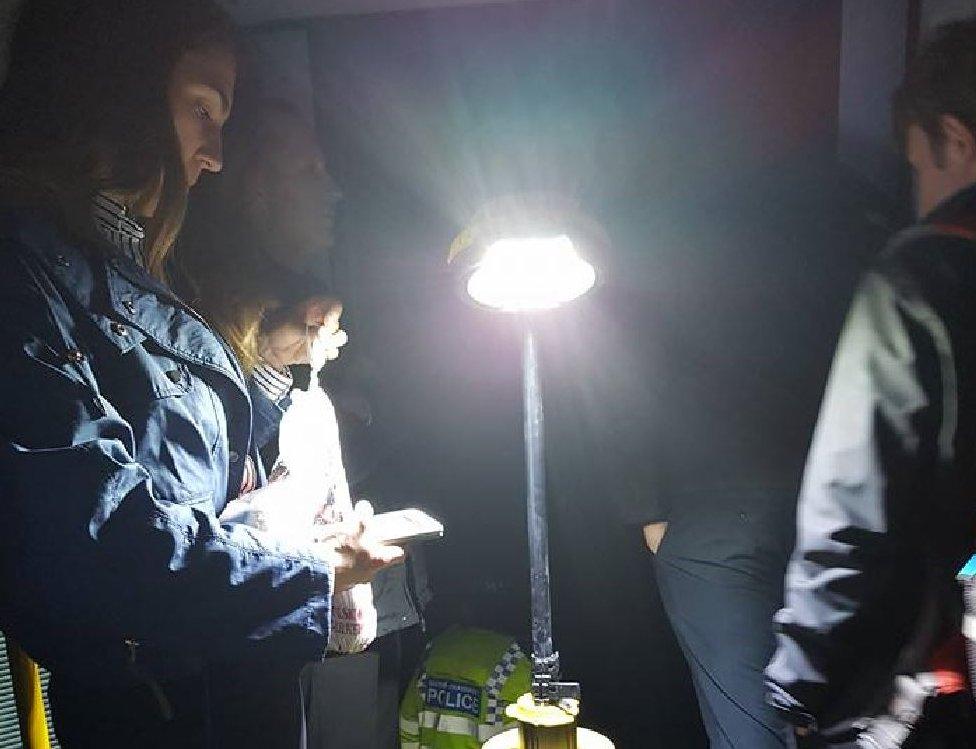
Temporary lighting was set up to help move the passengers stranded on trains in the tunnel
Jack Burgess was a passenger on the 06:34 London Euston to Birmingham New Street train, which clipped the derailed train.
He said: "Around 7am we went through the tunnel near Watford and there was a really loud scraping noise against the side of the train that got louder and louder, and then a very loud thud, which made the train bounce up and down a lot.
"The train then stopped and the driver got on the intercom, sounding very panicky.
"He kept telling everyone to stay in their seats. We were stationary for four hours or so.
"I just got off a train at Milton Keynes and they're not letting me go to Birmingham."
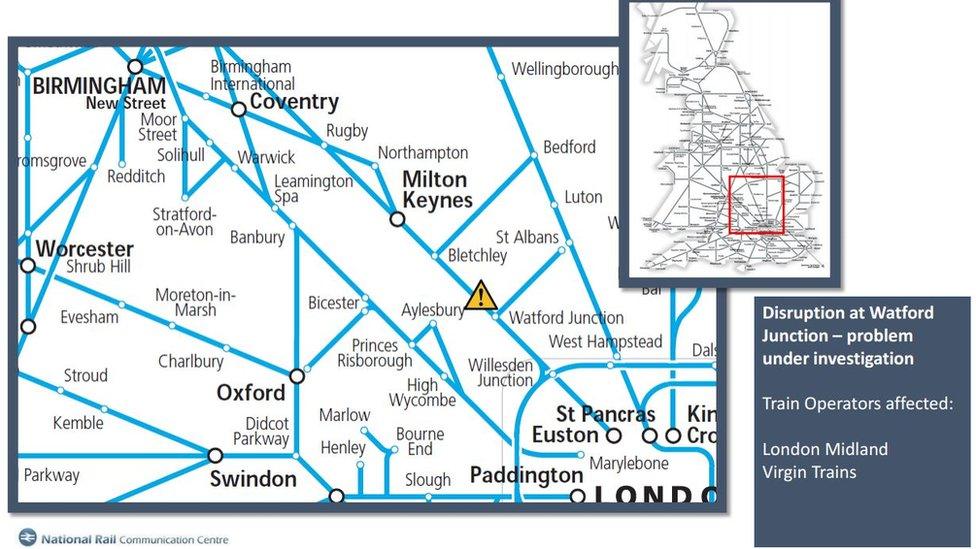
Network Rail said disruption was expected to continue for most of the day
Martin Frobisher, route managing director for Network Rail, said: "A train hit a landslip, caused by torrential rain, resulting in a small section of the train to leave the tracks a few miles north of Watford today. The train remained upright and there are no reported passenger injuries.
"A short time, after another train heading north gave a glancing blow with the derailed train. The train heading north did not leave the tracks."
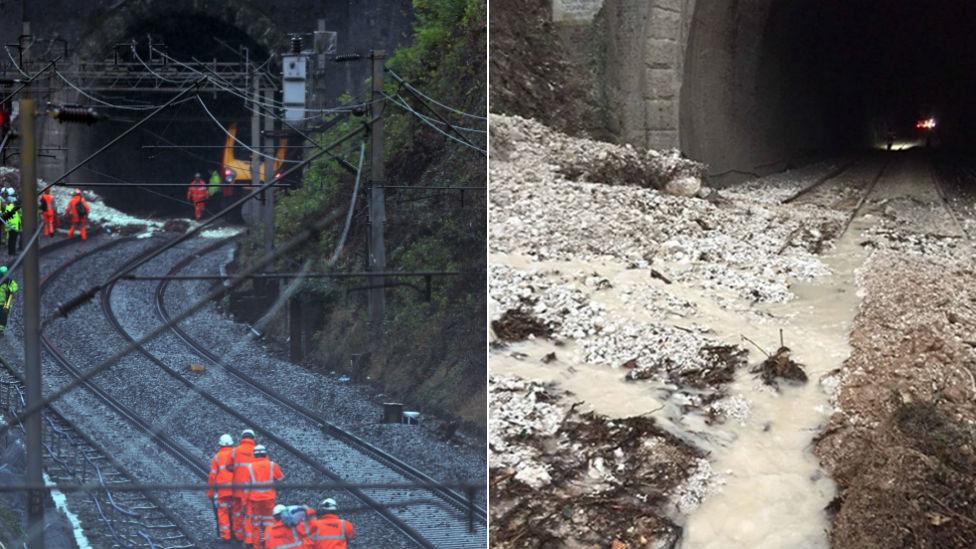
The accident happened as commuters were heading to London's Euston station
Francis Thomas, from London Midland, said the accident happened on a "busy stretch" of track, and "if something goes wrong it will take a long time for services to get back to normal".
Network Rail said two of the lines had reopened, external at reduced speed through the affected area, but journeys were expected to be delayed by up to 60 minutes.
"The two trains are still in the tunnel and Network Rail can't assess the damage to the track until they are moved," Mr Thomas said.
"They are unlikely to be moved until Saturday morning "at the earliest."

By Richard Westcott, BBC Transport Correspondent
There are 9,600 miles of embankments and cuttings above 3m high on Britain's rail network and most of it was built 150 years ago.
An engineer told me that when the Victorians knocked them up, they basically piled them as steeply as they could, using materials that they'd just dug out of cuttings further down the track. Some of that material deals with water about as well as a woollen swimsuit, so small sections can be prone to slipping after a downpour.
Network Rail does check railway cuttings and embankments every year, looking for cracks, bulges, or lose soil; but frankly, it's hard to work out which bits are about to fail and there's an awful lot of it.
When they fix embankments they make them shallower and they use modern materials, including different grained sands that drain the water yet lock together so they don't slip.
Another weather problem comes from the trees. You may have noticed in recent years, gale force winds keep blowing them onto the lines.
The old steam engines used to set fire to the branches, which kept them back. Today they often grow unchecked.

Are you near Watford Junction? Have you been affected by the crash? Let us know about your experiences. Email haveyoursay@bbc.co.uk, external with your stories.
Please include a contact number if you are willing to speak to a BBC journalist. You can also contact us in the following ways:
·WhatsApp: +44 7525 900971
·Tweet: @BBC_HaveYourSay, external
·Send an SMS or MMS to 61124
- Published16 September 2016
